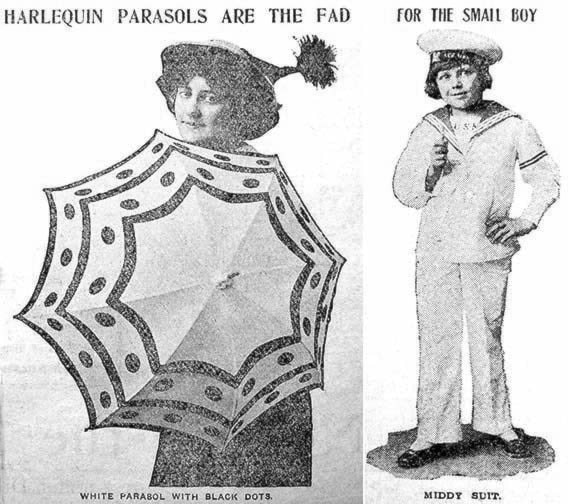Jim Cameron
Work for the womanly brain and hand. Catchy title. It's from the women's page, a staple in the local newspapers for decades.
In 1910 the women's pages featured recipes, romance, fashion, relationships, etiquette and household hints. Fifty years later they featured romance, fashion, relationships, etiquette and household hints.
The first Cranbrook page for women made its appearance in the Herald newspaper in October, 1910. Prior to that there were, from time to time, articles directed towards the "fairer sex".
The first of these appeared in the Herald in April, 1898. It was a short entry entitled "A Pretty Cloth," and described the creation of a one yard square tea-cloth made from pale blue linen ornamented by Renaissance lace braid in cream white with attached braids in the design of leaves and flowers with each side featuring a wide band of Torchon lace in a beautifully opened pattern. Nice.
At that particular time there were, according to reminiscences by Mrs. L.B. Vandecar, only six women in the entire town, which just about matched the number of buildings. Three of the ladies, Mrs. R.L. Eyre, Mrs. Angus Morrison and Mrs. Vandecar, were the wives of men constructing the Eyre Bakery, the Cranbrook Hotel, and the Royal (now the Byng) Hotel, respectively. Mrs. Donahue — a woman of particular independence — ran the East Kootenay Hotel. Of the remaining two, Mrs. R.L. Pratt and Miss Lizzie McPhee, little is known, but it is safe to assume that none of the group had the time, inclination, or possibly furniture and dishes to concern themselves with a yard-square, lace-trimmed tea-cloth.
Still, it was a nod to the presence of the women of the community and no doubt met with some approval.
June, 1898, saw an entire page more or less dedicated to women readers, with articles such as "About Gallantry — New Ways of Living Bring New Rules in Manners" and "The Provident Bride," in which a young woman requests that her suitor give her a silver dollar upon each visit in lieu of flowers or candy and then, one month before the wedding, presents him with $265 worth of coins for their honeymoon. "Her Blunder" was a lengthy tale in which Carolyn agrees to an engagement with Frank only if he can provide sufficient income to support her in style. Frank goes to Europe to make his mark and shortly afterwards Carolyn takes up with Frank's rich cousin Albert who she subsequently marries. Meanwhile, Frank saves the life of a rich old gentleman in Switzerland who adopts him and leaves him his large fortune when he dies. Conversely, Albert's benefactor, his uncle Jenkins, also dies and bequeaths to Albert an amount far short of that given Frank. Thus, Carolyn has sold herself for a pittance and lost the true, loving heart of her life. A bird in the hand is not necessarily worth two in the bush. The alternate version, of course, is that Carolyn gives the boot to Albert early on, marries Frank because she loves him and is rewarded when Frank inherits big-time; either version being the general drift of countless stories to come.
Autumn, 1898, saw the regular appearance of serials such as "When Lovely Maiden Stoops to Folly," by Laura Jean Libbey, a very popular American writer and the first female author to appear in a Cranbrook newspaper. Her stories set the standard for the "dime novels" of the day which would, in turn, become the format for the ever popular, formula-driven "romance novels."
The first honest-to-goodness women's page, "Work for the Womanly Brain and Hand," appeared in the Herald in late 1910 and is worth a look as it pretty much represents the women's pages for years to follow. It featured a lengthy article (complete with photos) on how to renovate window shades, to wit brush with a feather duster every day, keep children away and don't let them get wet (the shades, not the children).
Other articles included "In the Coal Mines" — a piece on the heavy labour undertaken on the loading docks by the women of Nagasaki, Japan, "How to Care for a Book," "How to Get Rid of Bats," "Find the Perfect Traveling Case" and just precisely what one should do when ones stamps are stuck together.
An additional piece explained how to make ordinary paper imitate parchment with the aid of sulphuric acid, a creative and potentially lethal way to spend an hour or two.
It would seem things were looking up emancipation-wise in December, when the main article appeared under the title "Earning a Way Through College." The suggestions included tutoring, doing laundry, mending clothes, typing lecture notes, making candy or becoming a "professional alarmist" which meant giving wake-up calls and turning on lights. Say no more.
Social customs were covered in some depth, as exemplified in 1912, when the discussion included Answering the Invitation, Paying the Carfare, Rising When Shaking Hands, Death of a Fiancé and Eating Lettuce.
Then, as today, top-ten lists were popular, as shown in May, 1911, under the heading "The Ideal Women's Qualities" goodness of heart, order, devotion, economy, sweetness, intelligence, amicability, fidelity, patience, and modesty, in that order.
The page headings changed from time to time during the early years, including Fashions and other Feminine Affairs, Women's Ways and Whimsies, What Milady Wants to Know, and the all-time classic, "For the Woman Who Thinks and Feels." Thankfully, for those who didn't, it was simply a matter of drawing up a chair, opening the newspaper to the women's page and following the directions.
